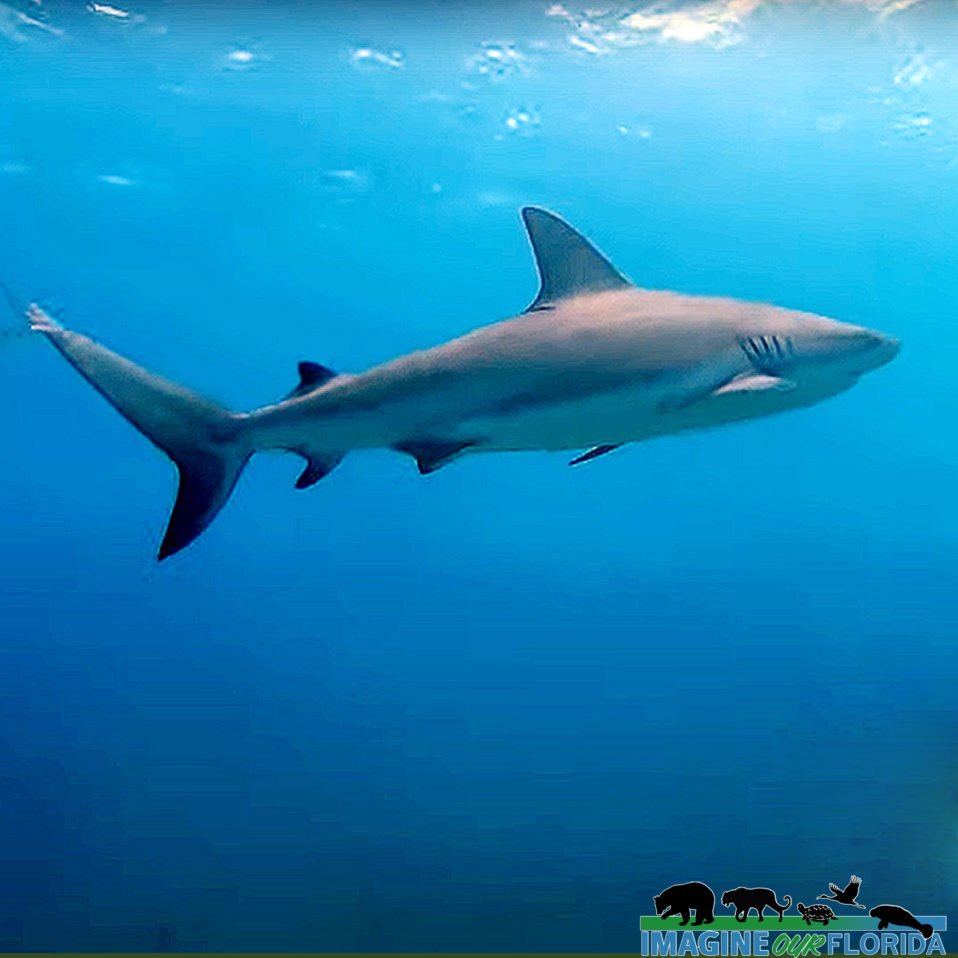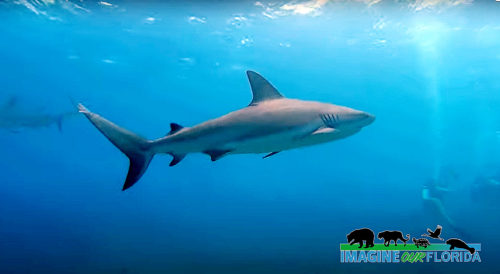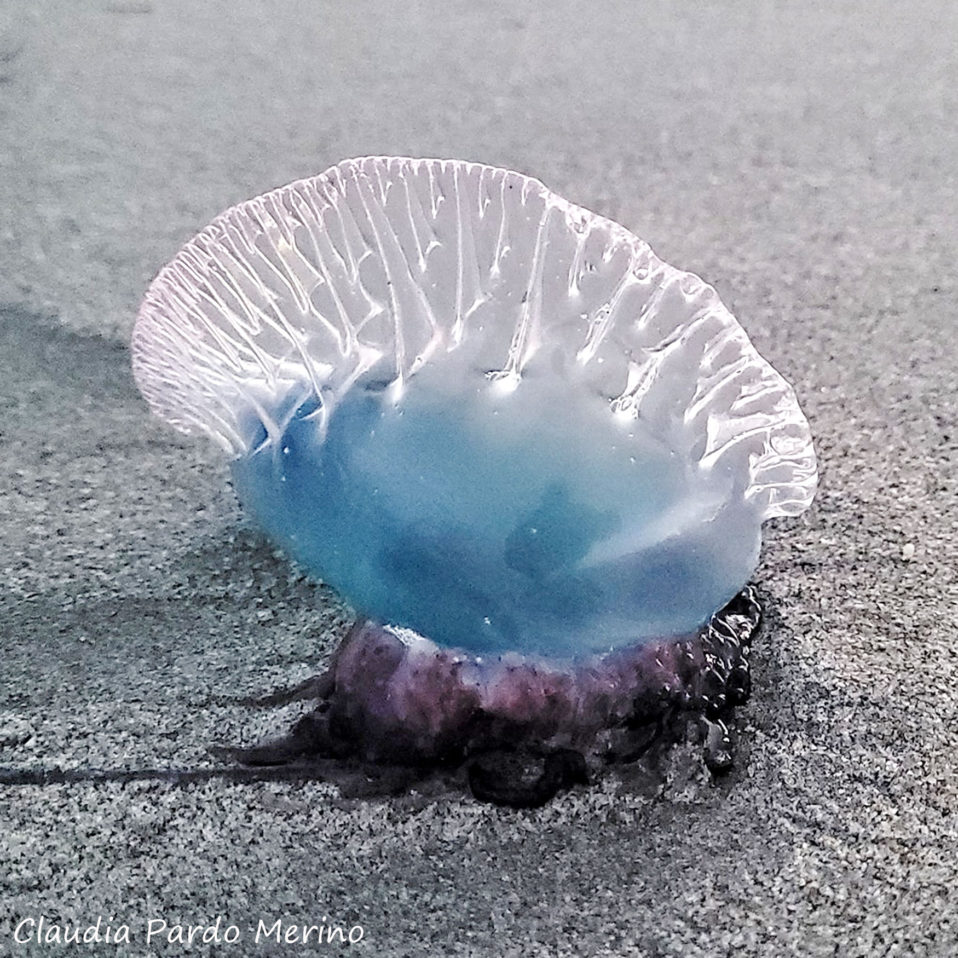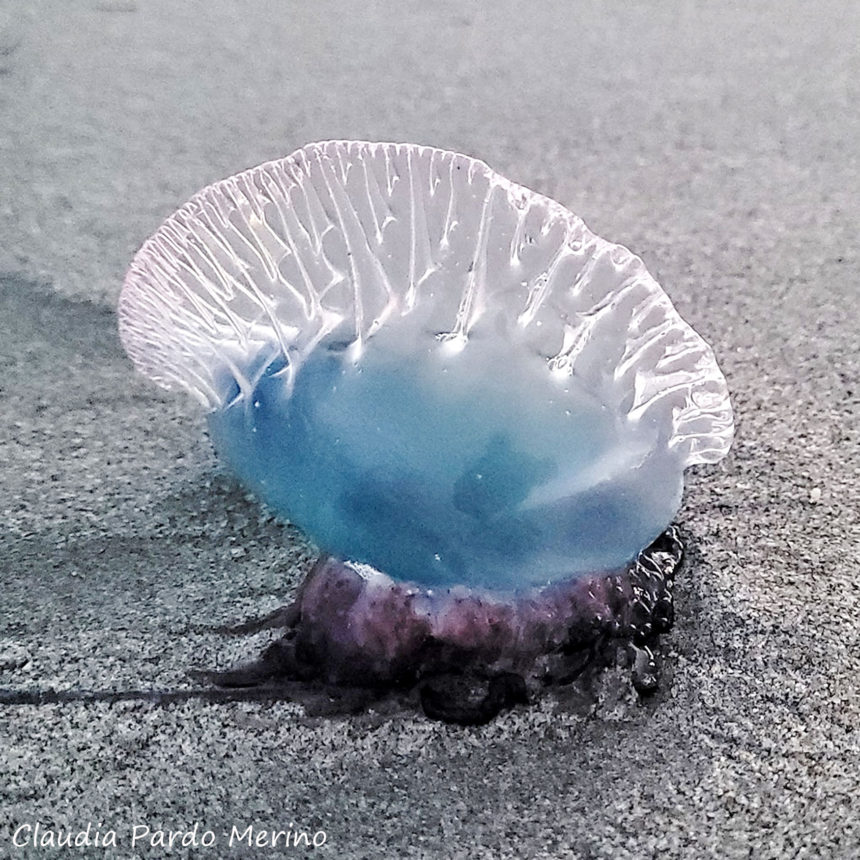Blacktip Shark
Portuguese Man o’ War
The Portuguese man o’ war, (Physalia physalis), is a species of siphonophore that is related to jellyfish. The Man-o-war is made up of four polyps that each performs an individual function. The gas-filled polyp that floats above the water and resembles a warship is responsible for floating with the wind and currents. The tentacles capture prey while a third polyp digests the food. The fourth polyp is responsible for reproduction.
Men o’ war can be seen floating in the ocean in groups of more than 1000. Below the beautiful floats are long tentacles that measure an average of 30 feet but can grow to well over 100 feet. The tentacles paralyze and kill crustaceans and small fish who are in their path. To avoid predators, the Men o’ wars will deflate their float.
Rising ocean temperatures and reduced oxygen in the water caused by climate change have created an environment where the Men-o-war thrive. The sting from a Portuguese man o’ war causes welts and is extremely painful. When you see these beautiful creatures on the shore, admire them from afar.
Be sure to Click on the video: https://www.youtube.com/watch?v=wMYWt0nKADU
Video Credit: Claudia Pardo Merino





Recent Comments